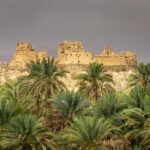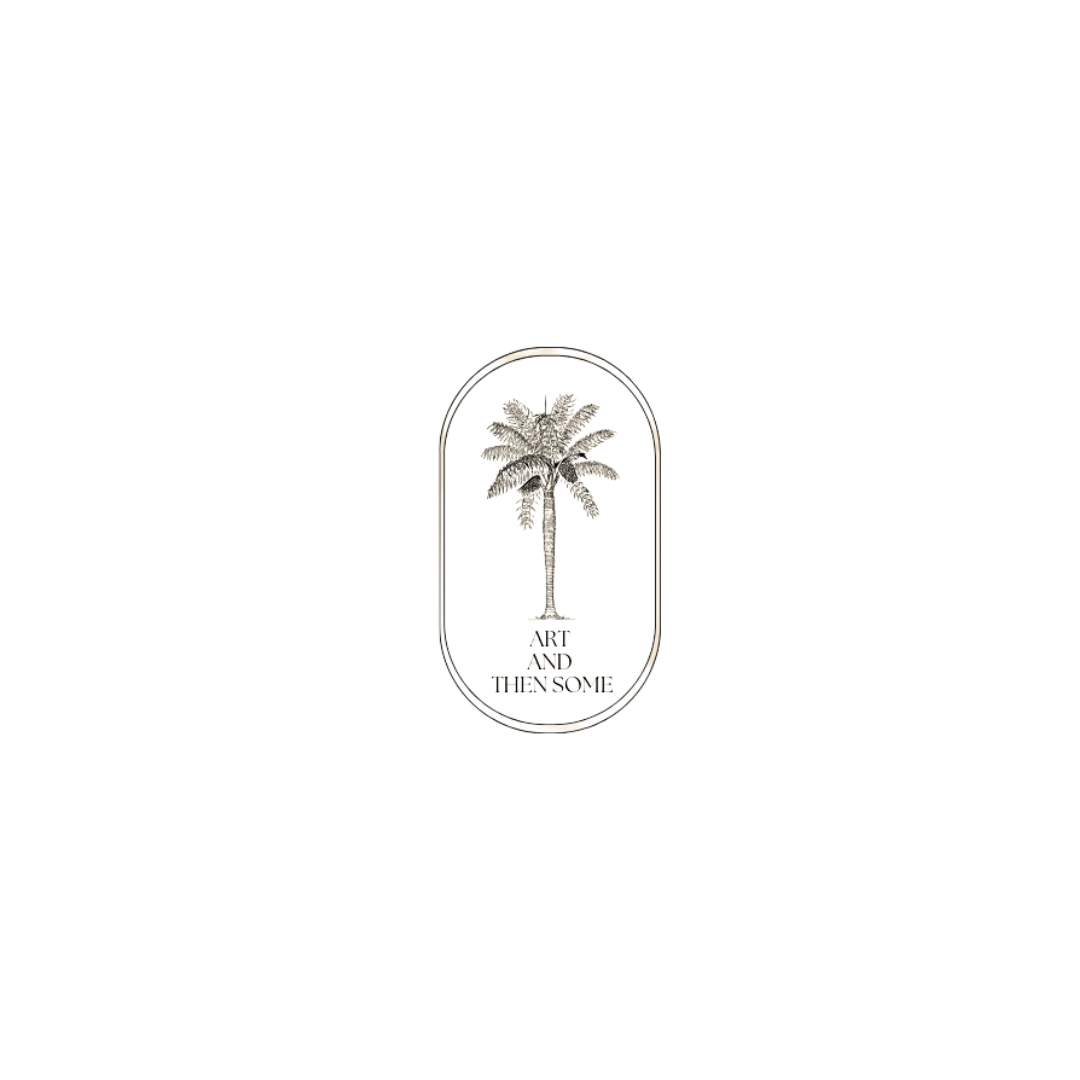Deserts, mountains, green oases, and wild beaches… At the end of the Arabian Peninsula, Oman is a paradise for enthusiasts of wide open spaces.
If you dream of the Orient and Arabian Nights settings, the Sultanate of Oman will certainly be your next destination. Nestled between the Arabian Sea and the mythical Rub al-Khali, this territory is a haven of nature where you will enjoy calm and tranquility.
Imagine: you swim in the shade of the palm trees of Wadi Shab, your bare feet caress the orange dunes of Sharqiyah Sands and you dive into the turquoise waters of Musandam. A far cry from its gleaming cousins Dubai and Abu Dhabi, the Sultanate of Oman is a gem in the rough. In this post, you will find out what to see in Oman: the 8 most beautiful natural sites.
Table of Contents
The creeks of Bandar Al Khairan
![What To See In Oman: 8 Most Beautiful Natural Sites [2025 Updated] 6 Bandar Al Khairan Oman](https://artandthensome.com/wp-content/uploads/2024/02/84089354_104694697699282_1412849135062099032_n.jpg)
50 kilometers east of the capital Muscat, the Bandar Al Khairan region is a superb spot for swimming, snorkeling, and scuba diving. This jagged coast is home to a multitude of deserted beaches, secluded coves, and islets accessible only by boat. You can bathe in warm and transparent water in the middle of the jagged hills. Underwater, you can observe coral reefs and colorful fish.
Tip: the many local travel agencies in the Bander al-Rowdha marina offer boat excursions (allow 17,000 Omani rials for two hours, or $38). Otherwise, go by car and find a fisherman who takes you on board for a few hours!
The swimming pools of Wadi Shab
![What To See In Oman: 8 Most Beautiful Natural Sites [2025 Updated] 7 Wadi Shab Oman](https://artandthensome.com/wp-content/uploads/2024/02/426103656_1871637809939990_2085484448005581797_n.jpg)
Wadis are streams that flow between mountains, carving deep canyons. Often dried up, they are home to many natural pools where you can swim. A 2-hour drive from Muscat by Coastal 17, Wadi Shab is one of the easiest to access. The path first meanders between the palm trees and the gardens, then you have no choice but to jump into the water! You swim from pool to pool until you enter a cave where a waterfall flows. An easy hike and swim, ideal for a hot day.
Tip: bring a waterproof bag to put your car keys, your papers, and your phone in. Go there early in the morning to enjoy the tranquility of the place. Access is free.
Sharqiya Sands Desert (formerly Wahiba Sands)
![What To See In Oman: 8 Most Beautiful Natural Sites [2025 Updated] 8 Sharqiya Sands Desert In Oman](https://artandthensome.com/wp-content/uploads/2023/03/sharqiya-desert.webp)
Located 200 kilometers south of the capital, in the Ash-Sharqiyah region, this sandy desert is the ancestral territory of the Wahiba tribe. Your visit is an opportunity to discover Bedouin culture by having a coffee with a family. You can also taste the many charms of the desert: walk in the dunes, go for a camel ride, a quad ride, or even learn to drive a 4×4 in the dune cords. Above all, don’t miss the sunset, when the sand turns orange-red. Unforgettable.
Tip: spend at least one night there, either in a bivouac with a guide or in a camp like the Thousand Nights Camp, the Safari Desert Camp (both accessible from Bidiyah), or the Sama Al Wasil Camp (accessible from Al Wasil).
The Wadi Bani Khalid
![What To See In Oman: 8 Most Beautiful Natural Sites [2025 Updated] 9 The Wadi Bani Khalid In Oman](https://artandthensome.com/wp-content/uploads/2023/03/wadi-bani.webp)
Very close to the Sharqiyah Sands desert and easily accessible, Wadi Bani Khaled is ideal for cooling off after a stopover in the dunes. A first turquoise pool welcomes you at the entrance. You cool off under the palm trees while admiring the ochre mountains. Continuing to Moqal Cave, the canyon narrows. You walk between the walls of dewy rock in incredibly soft water. A real pleasure!
Tip: bring a T-shirt covering the shoulders and shorts up to the knees to respect local customs. To enjoy the calm, come early in the morning and avoid the weekend (Thursday and Friday). Free access.
The summit of Jebel Shams
![What To See In Oman: 8 Most Beautiful Natural Sites [2025 Updated] 10 Jebel Shams In Oman](https://artandthensome.com/wp-content/uploads/2024/02/425325915_2150607198613359_2232155528664067482_n.jpg)
230 kilometers southwest of Muscat, Jebel Shams is part of the Hajar Mountains. With its 3009 meters above sea level, it is the highest point in the country. A road allows you to get closer to the summit. You will enjoy a splendid panorama over this environment of deep canyons, perched villages, and desert plateaus. Do not miss the marked hike called ” Balcony Walk “. This old mule track, almost suspended above the void, gives a breathtaking view of the Grand Canyon of Oman.
Tip: Some establishments offer traditional tents, rooms, and chalets to spend the night at the top: for example, the Jebel Shams Resort or the Sama Heights Resort . Make sure to dress warmly if you plan on camping out!
The Mountain Jebel Akhdar
![What To See In Oman: 8 Most Beautiful Natural Sites [2025 Updated] 11 Jebel Akhdar In Oman](https://artandthensome.com/wp-content/uploads/2023/03/jebel-akhdar-1024x576.jpg)
Still in the chain of the Hajar mountains, the Jebel Akhdar culminates at 2000 meters at the level of the Sayq plateau. Its name, which means “the green mountain”, originates from the many terraced crops that cover its steep slopes. You will see pomegranate trees, lemon trees, cherry trees, and also fields of roses. You will discover the irrigation canals called aflaj, which channel water into the gardens.
Tip: Marked trails allow you to cross the hamlets perched in the mountains, such as Al-Ain, Al-Aqur, or Al-Shirayah.
Rub al-Khali Desert
![What To See In Oman: 8 Most Beautiful Natural Sites [2025 Updated] 12 Rub al-Khali Desert In Oman](https://artandthensome.com/wp-content/uploads/2023/03/rub-al-khali.webp)
With an area of 650,000 km2, the Rub al-Khali is one of the largest sand deserts in the world. If you like neverending dunes, this place is for you! You will walk in the footsteps of British explorer Wilfred Thesiger, who crossed this desert between 1945 and 1950 with Bedouins. You come across breeders accompanied by their camels. On the road to Rub al-Khali, the ruins of the ancient city of Ubar are worth seeing. In Antiquity, this oasis was a stopover on the caravan route that brought incense from Arabia to Egypt, Greece, and Mesopotamia.
Tip: to explore this desert, call on a professional guide. Naura Zoubir, a hiking guide based in Oman since 2009, will organize a multi-day circuit with camping in the dunes, supervised by a team of Bedouins.
The Musandam Peninsula
![What To See In Oman: 8 Most Beautiful Natural Sites [2025 Updated] 13 The Musandam Peninsula In Oman](https://artandthensome.com/wp-content/uploads/2024/02/81.jpg)
Musandam Fjords, an Omani territory situated at the northernmost tip of the United Arab Emirates, is a stunning gem positioned between the land and sea. Its ochre mountains, reaching up to 2000 meters, descend sharply into turquoise waters, forming fjords teeming with diverse marine life. Opting for a traditional dhow excursion to swim and snorkel is highly recommended. During the excursion, you may encounter eagle rays, reef sharks, and turtles, and if you’re fortunate, playful dolphins may accompany your boat. For more adventurous explorers, kayaking or scuba diving are great options to discover the beauty of Musandam.
Tip: Khasab Tours ( khasabtours.com ) and Musandam Sea Adventure ( msaoman.com ) offer day and multi-day excursions.
ADDITIONAL TIP: The best period to travel is from November to March. Temperatures are mild (around 25°C). In October and April, it is a little warmer, but swimming in the sea is more pleasant.





![5 Best Cheap Hotels In Muscat [2025 Updated] 5 Cheap Hotels In Muscat](https://artandthensome.com/wp-content/uploads/2023/07/Muscat-Oman-1289284359-150x150.jpg)
